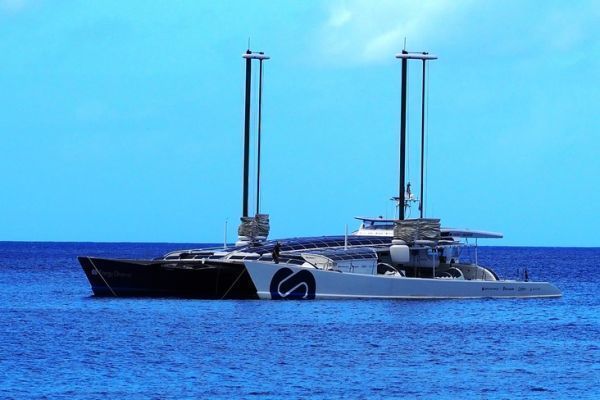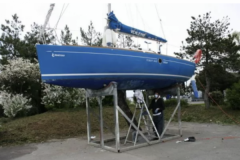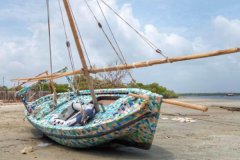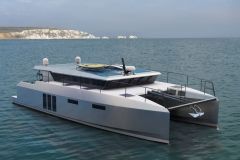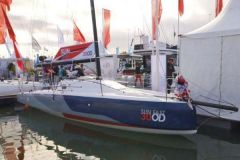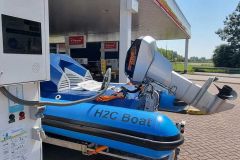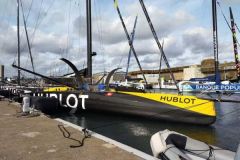The performance is far from trivial, as the average person might think vulgum pecus. Those who followed energy Observer's journey from the outset, in 2013, have long understood that it takes a dose of determination, passion and skill that can't be found at every crossroads, even maritime ones...
So when the opportunity arose to travel a few miles aboard the magnificent floating laboratory... we didn't hesitate!
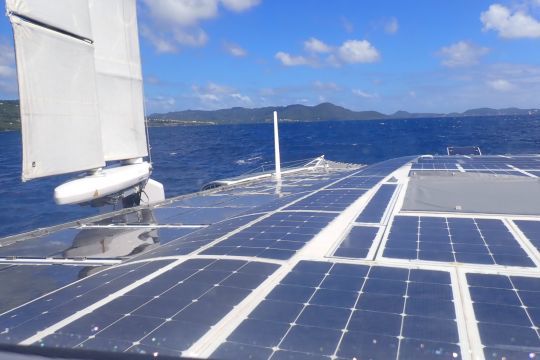
Wisely anchored in Anse d'Arlet, Martinique, the big bird is gently tugging at her crow's feet... Jibé, her intrepid and smiling captain, has come to pick us up with the big dinghy used as a tug for port maneuvers, which are always very delicate with such a unit. Anchor swiftly slipped away, the catamaran evades slowly, quietly and smoke-free, with the elegance of a ballerina.
Silence and electric drive
No pollutant emissions and not the slightest noise pollution, it's electrically propelled. On board, the visit will surprise the vast majority of yachtsmen. Almost everything here is unusual. The sober black cylinders set vertically on their balestrons have nothing in common with our usual masts. The entire external décor, almost exclusively based on photovoltaic cells, lends the setting an atmosphere worthy of a fictional comic strip.
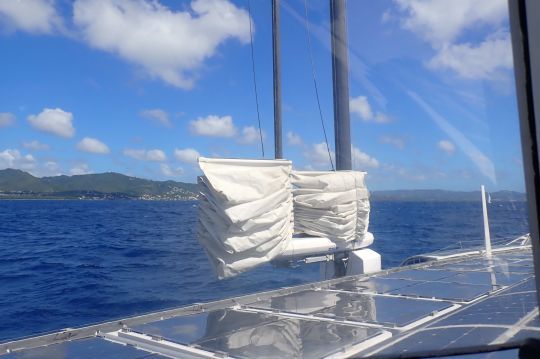
Large multihull comfort
As you approach the southern tip of Martinique, the imposing Diamant rock rises in massive silhouette. Its vertiginous drop-offs are a delight for divers, and generate not inconsiderable sea currents. Similarly, the brave fifteen-knot trade winds are locally boosted by a "venturi" effect with the coastal cliffs. All this creates a solid chop in the vicinity of Le Diamant.

Sailing comfort is quite unusual for boats under 60 feet. No rolling motion, barely perceptible pitching and still not the slightest noise. The wake, flowing delicately along the boat's tightly stretched water lines from a large racing catamaran does not produce any sound either.
A laboratory boat
Jibé takes advantage of these quiet moments to introduce us to the ship's controls. Energy Observer's technical equipment is unusually sophisticated. The name laboratory is well justified. Its crew has access to a colossal amount of data and information. Similarly, the number of propulsion parameters that the crew can control is unparalleled on even the most sophisticated cruisers.

Energy Observer has all the makings of a sailboat
The system of collapsible and reefable wings designed by the VPLP architectural firm, now marketed by Ayro, gives this catamaran sailing characteristics similar to those of a sailboat. In fact, it's a fifty! Except that its sail area is very modest compared to its weight and length. It's quite impressive and seductive to see how this almost 30-meter unit, displacing 30 tons, manages to move, even upwind, with the sail area of a 9-meter sailboat. Tacking is a simple formality that takes just a few minutes, in liner-like comfort and without moving from the cockpit!
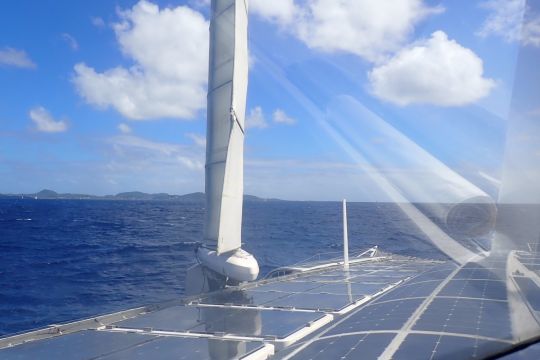
One of the main aims of the odyssey is to provide as much information as possible on all aspects of hydrogen mobility. In fact, solar panels are used to produce the hydrogen needed for the on-board fuel cell, from seawater.
Maximum engine power is also very limited: 2 x 40 kW, equivalent to 120 hp. And yet, with just 10 Kw, or 16 hp, the ship is already making 6 knots, an average speed that is typical of the vast majority of cruising yachts. These undoubtedly modest figures are the result of a conscious choice. The two engines at full power deliver a speed of well over ten knots, which can be easily exceeded with a good downwind breeze.

Few people are lucky enough to sail aboard this endearing vessel. However, during her many ports of call, a visit on board is sometimes offered to the public. We strongly recommend futuristic technology enthusiasts not to pass up the opportunity if it arises. Energy Observer prefigures a certain form of navigation that could flourish in an environmentally-friendly future.
